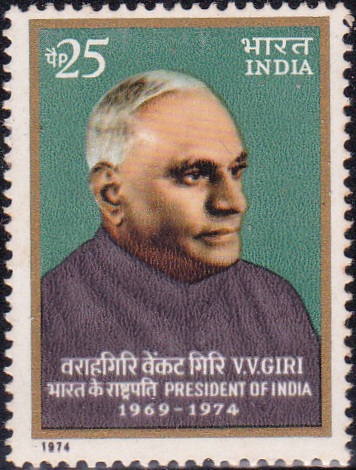
V. V. Giri
A commemorative postage stamp on Varahagiri Venkata Giri, 4th President of India (1969-74) :
Issued on Aug 24, 1974
Issued for : By issuing a commemorative stamp in honour of V.V. Giri, the Posts and Telegraphs Department consider themselves privileged in being able to offer a token of the country’s immense gratitude to this illustrious son of India.
Designed by : Shri Charanjit Lal, Artist, P and T Dte.
Type : Stamp, Mint Condition
Colour : Multicolour
Denomination : 25 Paise
Overall size : 3.91 X 2.90 cms.
Printing size : 3.56 X 2.54 cms.
Perforation : 13 x 13
Watermark : Unwatermarked H–2 P.G. coated paper
Number Printed : 30,00,000
Number per issue sheet : 35
Printing Process : Photogravure
Printed at : India Security Press
Name : Varahagiri Venkata Giri
Born on Aug 10, 1894 at Brahmapur, Odisha, India
Died on Jun 24, 1980 at Chennai, India
About :
- VARAHAGIRI VENKATA GIRI was born on August 10, 1894 at Berhampur in a nationalist family. An active public worker since his student days, he has always been in the forefront of the national struggle for freedom.
- While studying law in Ireland, young Giri developed contacts with Irish leaders like De Valera, William Collins and was inspired by the revolutionary and trade union activities of the Irish freedom struggle. But his very first contact with Gandhiji in London in 1914 brought a new turn to his life. On return to India, Giri became an ardent disciple and follower of Gandhiji. Thereafter, he took part in the different freedom movements launched by Mahatma Gandhi and courted imprisonment several times.
- A labour leader of international renown, Giri is one of the patriarchs of the Trade Union Movement in India. In pre-Independence days Giri organised many strikes and fought many battles for the economic and social uplift of the labour class in India. He became the spokesman of the labour both in and outside India and attended the Second Round Table Conference held in 1931 in London as a representative of Indian labour.
- In 1934 Giri was elected to the Central Legislative Assembly and made a mark as a parliamentarian. When the provincial ministries were formed by the Congress in different provinces, Giri became Minister of Labour, Industries, Co–operation, Harijan uplift in Shri Rajagopalachari‘s cabinet in the Government of Madras and pioneered many schemes for the welfare of labour and the down-trodden.
- After the Congress ministries resigned in 1939 as a protest against involving India in World War II by the British without consulting Indian opinion, Giri was in the forefront of the Quit India Movement and was sentenced to 15 months’ rigorous imprisonment. In 1946 Giri was re-elected to the provincial assembly and became Minister of Labour and Industry in the Government of Madras.
- Later, Giri became the First High Commissioner of India in Ceylon and exhibited rare diplomatic skill and negotiating ability in dealing with the problems of “stateless” citizens. He became Minister of Labour in the Central Cabinet in 1952 but he resigned the Minstership two years later on the issue of implementation of Industrial Tribunal Award on the Banking Industry.
- Giri was appointed Governor of Uttar Pradesh in 1957. That marked the beginning of a new era in his public life, that of an elder statesman. From 1957 to 1967 he was Governor in the States of UP, Kerala and Mysore. He not only held these positions with dignity and distinction but with the wisdom of his age and experience he infused new spirit in the role of a Governor. He was elected Vice-President in May 1967 and two years later in August 1969, he was elected President of India. As Vice-President and President of India, he upheld the great traditions of his illustrious predecessors and became a symbol of the unity of the Nation.
- Giri thus held very high positions in public life and had distinguished himself as an eminent administrator, diplomat, statesman and has dedicated his life for about half a century for the cause of the downtrodden.
- Affectionate and amiable, frank and friendly and extremely courteous, Giri is one of those leaders of our country who combine in themselves the spirit of tolerance and the dynamism of youth.



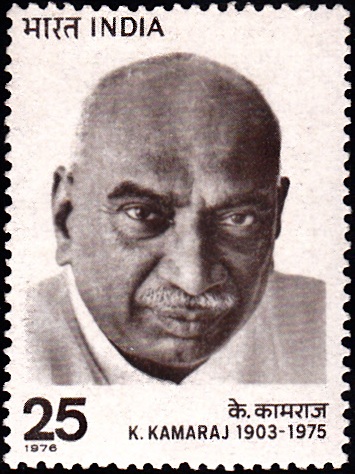
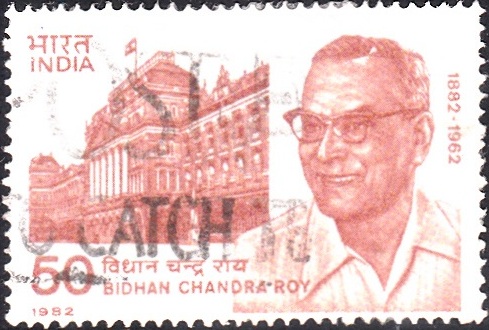
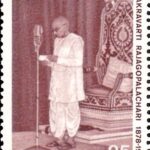
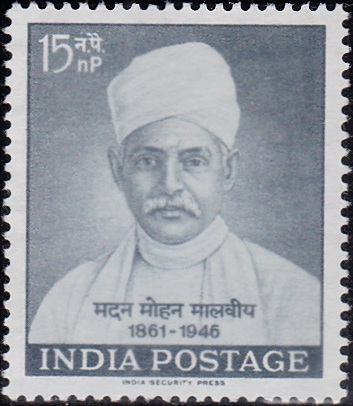
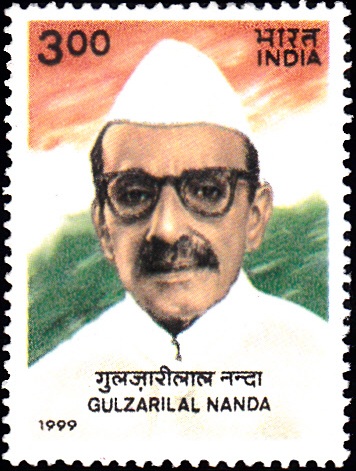
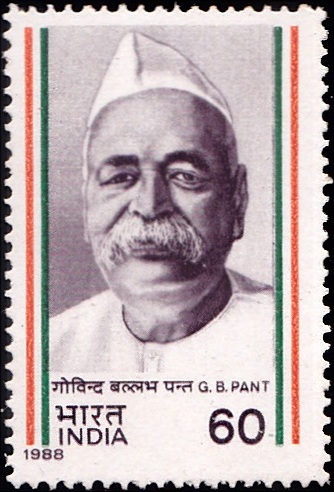
[…] however, reviewed the Fleet at Sea in 1966. The next Review took place, during the Presidency of Shri V. V. Giri, on 28 December 1969. Shri F. A. Ahmed reviewed the Fleet on 11 January 1976. The sixth Review was […]
[…] Soviet Union and for the welfare and prosperity of the great Soviet people.“ (Message from V. V. Giri, President of India, to His Excellency Mr. N. V. Podgorny, Chairman of the Presidium of the Supreme […]
[…] Vassiliou (1989) and Glofcos Clerides (1997), paid state visits to India. From India, President V.V. Giri (1972) and President R. Venkataraman (1988) visited Cyprus. Prime Minister Indira Gandhi’s […]
[…] for him. He was also the favourite of Sardar Vallabh Bhai Patel and former Presidents of India, Sh. V. V. Giri, Shri R. Venkatraman and Sh. A. P. J. Abdul Kalam. In appreciation of his contribution to Classical […]
[…] existence, much has been done to achieve these objectives, but much more remains to be done. As our President has stated very aptly, there is a feeling that the gulf between promise and fulfilment is widening. […]
[…] reality so that we can make India occupy a premier position in the comity of nation.” – V. V. Giri, Rashtrapati Bhavan, New […]